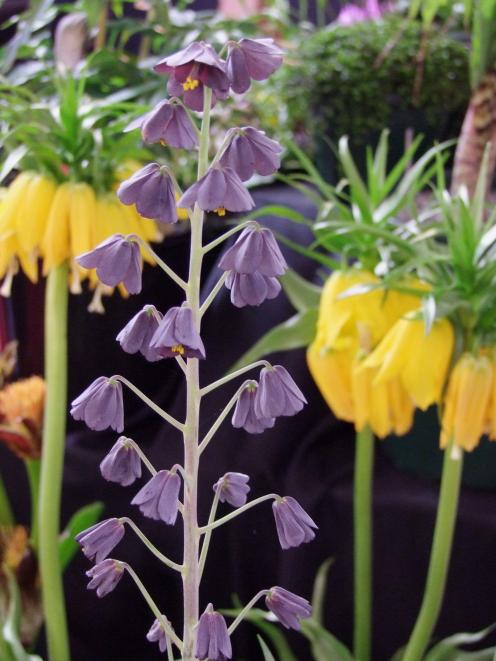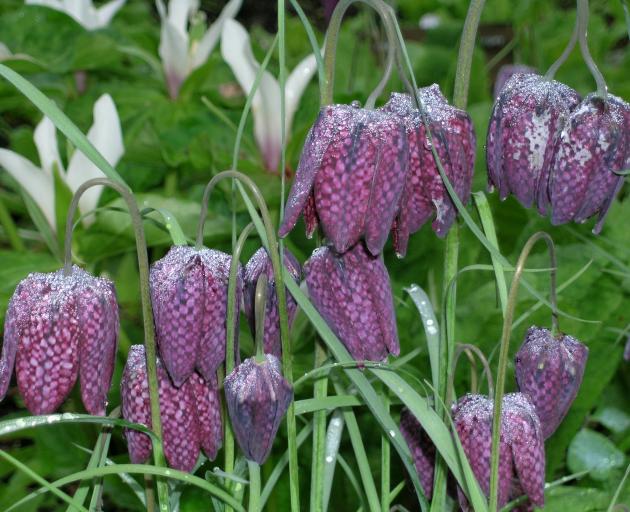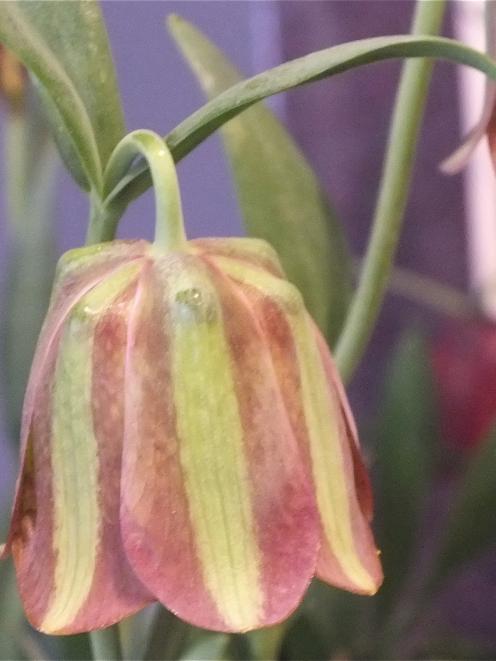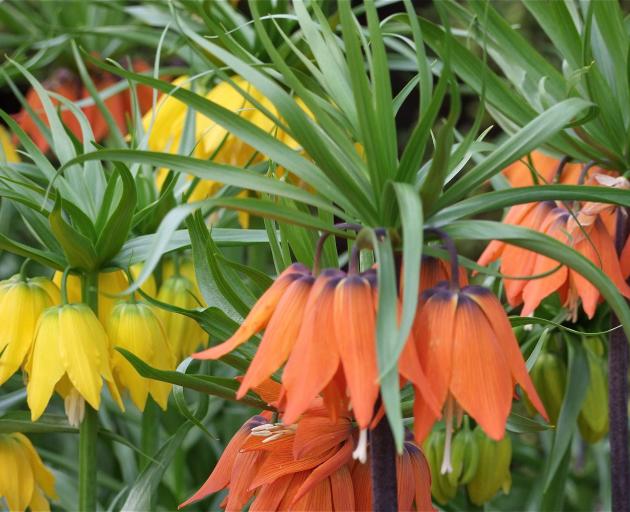

All fritillarias have this scent, none more so than crown imperials (F. imperialis), whose strong pong English writers describe as foxy. Never having been close enough to a fox to know, I’ll stick with using musky.
That scent has a really positive note, as it deters deer, rabbits and rodents, the latter responsible for damage to many small bulbs.
Introduced into Britain from the Western Himalayas more than 400 years ago, F. imperialis’ bold yellow and orange blooms on 1.3m stems ensured its popularity. Its height means it is usually planted away from paths, so the smell isn’t much of an issue.
The quieter tones of the smaller fritillarias mean they sometimes are ignored, although there are about 100 different species, of which a limited number are available in New Zealand. Bulbs are usually sold potted, but some vendors offer seed and I’ve just spent $15.50, including postage, on three species — F. acmopetala, F. collina and F. tubiformis. With bulbs costing about $15 a pot, I don’t need many to germinate to be ahead of the game.


Fritillarias are related to lilies, so I won’t quibble about F. persica being known as Persian lily. Its dusky purple flowers that hang from the 90cm stems in a line of little bells have a light perfume, unusual in the genus, as most “frits” have no scent. Persian lilies will grow in sun, as long as it doesn’t dry out.
Although all frits come from the northern hemisphere, most are from Europe and the Middle East, but there are some North American species. F. camschatcensis is wide ranging, from Alaska to Oregon, but is native to northern Japan and Siberia, too. Very prolific, the numerous rice-like offshoots appear in their dozens around the main bulb eventually mature to produce deep maroon blooms.

Three delicate-looking green frits that display well the striped bell-shaped flowers of the genus are F. acmopetala, a native of Cyprus; F. pontica, from southeast Europe and Asia Minor; and F. graeca, from Greece.
F. verticillata takes a different view of markings, meaning they’re inside the pale green flowers, so at flower shows, I’ve seen mirrors placed under the exhibits to display the delicate charm of this Asian species.

Hopefully, they’ll return next year with lots of the special smaller species to promote the charms of fritillarias.













